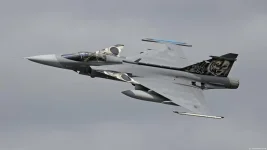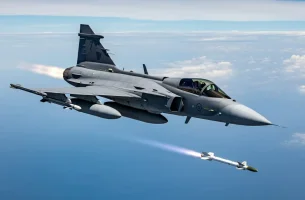- Views: 2K
- Replies: 35

In the race to secure India's Multi-Role Fighter Aircraft (MRFA) contract for 114 new fighter jets, Saab is making a strong pitch with its Gripen-E, emphasizing its commitment to "Make in India" and offering seamless integration of Indian-made weapons.
Saab India has reiterated its pledge to manufacture the Gripen-E in India if selected, and is open to incorporating a range of indigenous weapons, including the Astra beyond visual range air-to-air missile, the Rudram anti-radiation missile, and the Smart Anti-Airfield Weapon (SAAW).
A senior Saab India official highlighted the ease of integrating these weapons, stating that it primarily involves software upgrades to the fighter's core weapons system computer. Saab engineers are prepared to collaborate with the IAF's Aircraft & Systems Testing Establishment (ASTE) to ensure smooth integration from the early stages of production. This would allow the IAF to deploy its own weaponry on the Gripen-E, increasing its versatility and compatibility with India's existing defence infrastructure.
Saab's offer to collaborate with the IAF on software development for weapons integration is a significant step, demonstrating the company's willingness to tailor the Gripen-E to India's specific operational needs. By working closely with ASTE, Saab aims to guarantee seamless integration of Indian weapon systems without delays or complications, granting the IAF greater autonomy and operational flexibility.
Regarding the Raven ES-05 radar, a key component of the Gripen-E's sensor suite developed by Leonardo Aerospace, Defence and Security, the Saab official confirmed Leonardo's full cooperation with Saab's plans. This suggests that ensuring the radar's compatibility with Indian operational requirements will not be an issue. However, it remains unclear whether the IAF will demand full access to the source code, a sensitive issue often linked to technology transfer and strategic autonomy.
This development comes as India seeks to modernize its air force and bolster its domestic defence industry. Saab's proposal, with its focus on indigenous production and weapons integration, positions the Gripen-E as a strong contender in the MRFA competition.


